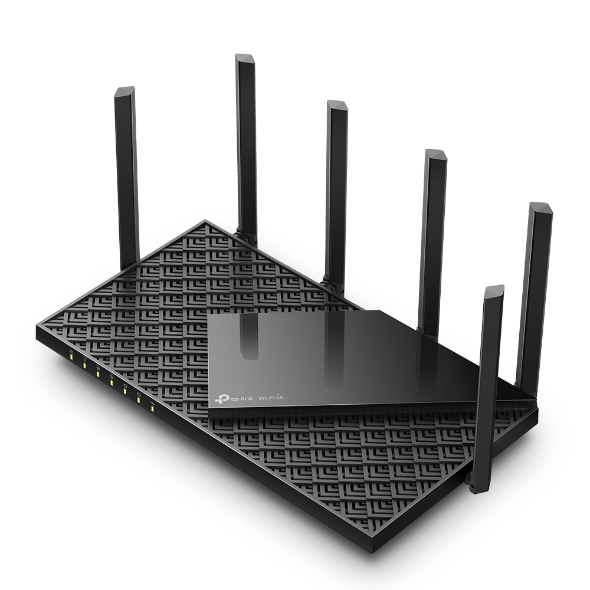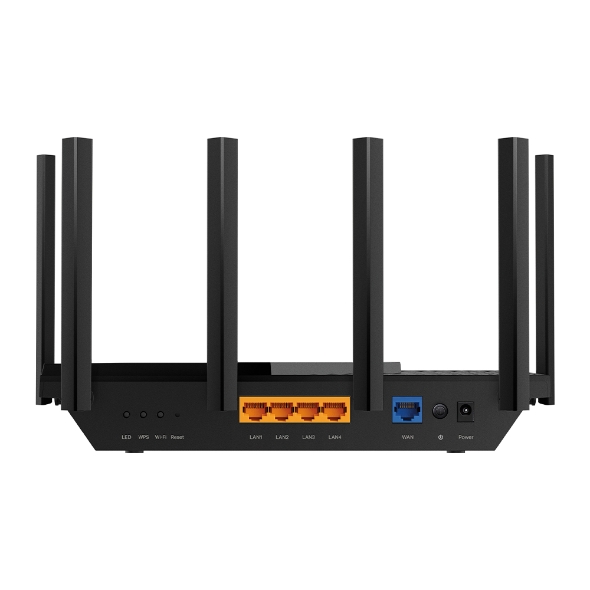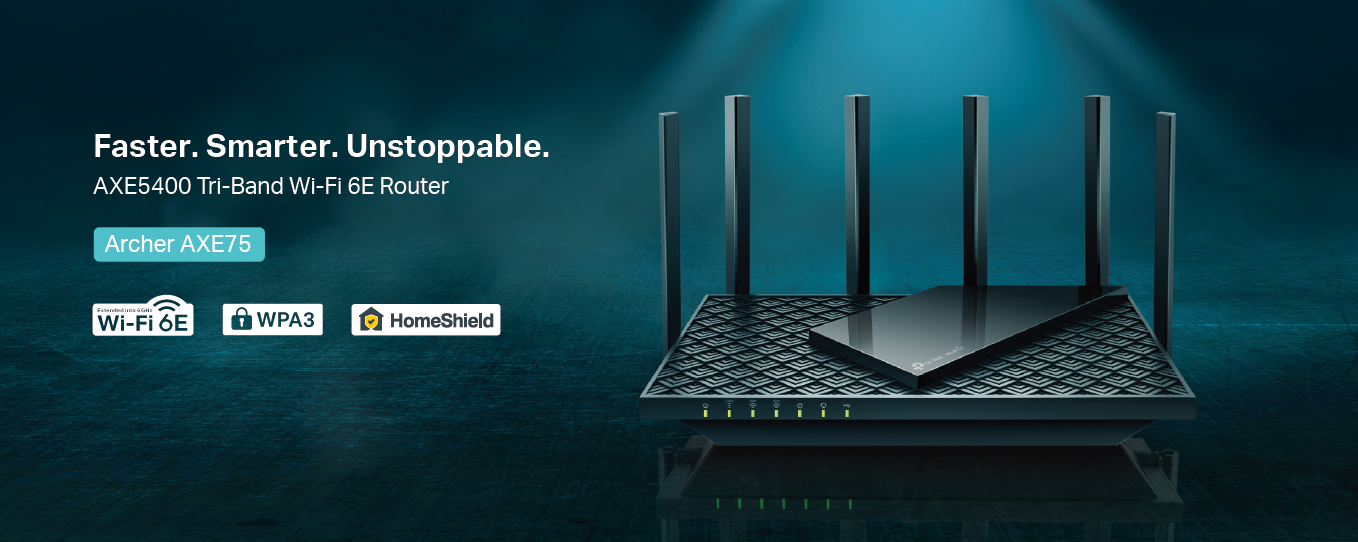TP-Link Archer AXE75
- All prices mentioned above are in United States dollar.
- This product is available at Amazon.com, Bestbuy, eBay.
- At amazon.com you can purchase Certified Refurbished TP-Link AXE5400 Tri-Band WiFi 6E Router (Archer AXE75)- Gigabit Wireless Internet Router, ax Router for Gaming, VPN Router, OneMesh, WPA3 (Renewed) for only $159.99 , which is 20% less than the cost in Bestbuy ($199.99).
- The lowest price of TP-Link - Archer AX5400 Pro Dual-Band Wi-Fi 6 Router - Black was obtained on December 30, 2024 8:22 pm.
Last Amazon price update was: December 30, 2024 8:22 pm
×
Product prices and availability are accurate as of the date/time indicated and are subject to change. Any price and availability information displayed on Amazon.com (Amazon.in, Amazon.co.uk, Amazon.de, etc) at the time of purchase will apply to the purchase of this product.
















 Amazon.com
Amazon.com







Anonymous –
Easy set up, Noticed Faster Streaming voices sync was an issue before now is gone, Woootttt Woot
Anonymous –
Easy set up, Noticed Faster Streaming voices sync was an issue before now is gone, Woootttt Woot
Anonymous –
Easy set up, Noticed Faster Streaming voices sync was an issue before now is gone, Woootttt Woot
Akire –
I have had internet struggles for a long time but I have been hesitant to upgrade my router, reasoning that my internet provider is the issue. I tried a mesh system to improve it in the past with little success and gave up there. Naturally, when I learned about the TP-Link I was skeptical about its potential and not to sure I wanted a spider-looking thing in my living room. But now that I have tried it, I have been converted. There is just no going back. It was my internet provider’s router that was the issue and not the internet itself. This router works so well and amplifies my signal significantly. My download speed is now over 5-10 times faster and my upload speed has doubled. I tested my speeds at various times during the day with the old router and did the same with the TP-Link and the difference is considerable with each comparison. My household has many devices that connected wi-fi, one ethernet computer connection, and several streams going on simultaneously at times. It can definitely add up to a heavy load periodically. I have not had any issues with connectivity since I installed the TP-Link. Even in problem areas, like a corner surrounded by a brick wall, the connection remains stable and strong. The usual buffering problems I was having during streaming are now nonexistent. The congestion reducing capabilities are an asset as the ethernet connected computer used to cause the rest of the wifi connected devices to lag and that has not been an issue since replacing the router. As for the aesthetics, the antennas rotate all directions so they can be lowered to have low profile, depending on your needs of course. I particularly like this because I subscribe to the teachings of Feng Shui which explains that points bring “fire” element energy and that is not always desirable in certain areas of the home. So having the ability to circumvent this issue is a relief. Set-up was very simple and streamlined. All I had to do was turn off my modem and plug in the proper cables in the appropriate ports. After turning my modem back on, I turned on the router and ¡voila! It was up and running. It includes a link that allows you to complete the installation easily on your smartphone, as well as rename the router’s wifi name and put in a new password. Just be sure to note down each password because you will end up with a total of three and if they are different (which they should be for security reasons) it will get confusing once it is all set and done. This device includes added advanced security which is great and really brings peace of mind considering the increasing changes and threats that exist in the virtual world. Overall, I am glad I made the move to replace my router. I will continue my praises and appreciation for the TP-Link and its ability to improve an increasingly needed utility in my home.
CactusMan –
My router had started to age, and so I was excited to see what kind of in-home Wi-Fi gains I’d see with this new TP-Linkk Archer AX5400 Pro router. Some basics: I have an Arris Surfboard DOCSIS 3.1 modem with speeds that support Cox’s Gigablast and then some, though my actual service plan includes speeds only up to 500Mp/s so I’m not maxing out any speeds by any means- though my equipment is plenty capable and has plenty of extra headroom. My previous router was a Netgear Nighthawk variation that was about 5 years old, and did not cover my entire 1,500 square foot house corner to corner. I knew Wi-Fi six came with some benefits, such as improved simultaneous downloads and streams, so I was eager to get this set up since I have a handful of Wi-Fi 6 compatible devices including my Apple TV’s, MacBook Pro, and of course my phone. Quick little Pro Tip too before we continue: during Setup, keep your network names and passwords the same as your previous router’s network names and passwords to avoid having to manually re-sign in to your Wi-Fi on all of your devices. Setup through the mobile TP-Link “Tether” app was somewhat simple, though I had to restart my modem more than once and verify that I was connected via the correct Ethernet-In port on the router (you can use either the 1Gbps Ethernet input or the 2.5Gpbs input, though make sure that selection is consistent in your setup settings in the app). Soon enough I was up and running, having set up my Wi-Fi Name, and dis-enabling Smart WiFi option (though most folks will want to keep that setting turned on for ease of use and not needing two separate logins). The Smart Wi-Fi option is a feature TP Link offers that is similar to features included by other manufacturers including Netgear. This feature essentially enables you to use the same network name and password for both your your 2.5Ghz and 5Ghz WiFi bands, and intelligently switches your device between the two bands based on various factors so that you always have the best speeds available on your devices. Personally, I like having the two separate bands and am used to manually switching between them depending on how strong my connection is, so I’ve turned this option off. One thing to note is that if you disable your Smart Wi-Fi option, anything on the 2.5Ghz band will be *significantly* slower than your 5Ghz band. I get upwards of 400Mps on the 5Ghz band while peaking around 60Mps on the 2.5Ghz band, but that is the nature of the beast: the 2.5Ghz band is better for distance and suffers in speed, and the 5Ghz band benefits from your device being closer to the router and gives you much better speeds. I will say though, this router’s 5Ghz band is SUPER strong and can reach every corner of my house, so I may end up turning the Smart Wi-Fi option back on since I’m almost convinced that all my devices will connect with the faster band. One thing I preferred about the Netgear Nighthawk’s router app is that is provided you much more utility for free than what I have been able to uncover in the TP Link “Tether” app. Some of the most useful feature of the Tether app seems perhaps paywalled: the app includes a bunch of advertising to subscribe to their “Premium Support”, which seems a little unnecessary unless you’re using this for a small business and/or have more needs than home Wi-Fi. A potential benefit of choosing this router is that it includes a feature called “One Mesh” which lets you add TP Link “One Mesh” range extenders for a Mesh in-home Wi-Fi network. I haven’t tested this, so I’m not sure if it’s a true mesh-network or a good use of the term “Mesh” for marketing in order to sell you a bunch of glorified basic Wi-Fi range extenders. Overall, my devices seemed to have a marked improvement in overall signal strength across my smaller 1,500 sf house. Given that my Apple TV’s utilize Wi-Fi 6, streaming on them (especially the one in the bedroom furthest away from the router) was much improved. I’d recommend this router for anyone looking to upgrade and doesn’t want to rent a unit from their Internet Service Provider.
PJPJ –
What’s in the Box • Router • Power supply • Ethernet cable • Basic Quick Start Guide If you don’t want to mess with optimizing the configuration for your network, just use the quick configure. Follow the Quick Start Guide and you’ll be up and running in short order. But if you have a decent understanding of networking, you will want to go straight to the advance configuration. I initially set mine up as an isolated network, with no Internet access so I could do initial testing in a sandboxed environment. TP Link does not make it easy to set the router up without first taking down your network and plugging the router directly into your ISP modem. But if you do not connect the router to the Internet until after you configure it, you are able to set it all up locally. I managed to get in and configure mine locally and set up a sandboxed network without Internet access. I connected a few test devices including an IoT device and a phone. The Tether app (download from the app store using the link on the TP Link website) allows simple configuration changes from your phone. But you have to set up a TP Link web account to use it. You will also get nag messages urging you to bind your router to your TP Link Web account. Once I had everything configured the way I wanted it and the devices in my sandbox were communicating, I connected the TP-Link Archer AX-5400 to my ISP modem in place of my regular router. The TP-Link router connected to the Internet and my previously sandboxed devices were online. I went out to a few websites and ran a speed test. I set up a guest network in the router configuration and connected a couple of IoT devices to the guest network. Everything worked really well. After the successful tests, I did replace the TP-Link Archer AX-5400 with my original router. Unfortunately, the TP-Link Archer AX-5400 only has 4 Ethernet ports and I need at least 7 for the wired part of my network. The TP-Link Archer AX-5400 is a solid router with WiFi 6 capabilities, so I decided to put it in AP (Wireless Access Point) mode and extend my wireless network capabilities. I connected it to my border router via an ethernet connection in a central upstairs bedroom. The TP-Link Archer AX-5400 now provides a solid WiFi6 signal in areas of my house that previously only had a weak signal. Reconfiguring the router into AP mode was simple, just a matter of selecting Access Point from the Operation Mode configuration screen. In summary, this router is well suited for those who want minimal involvement with configuration and have a simple mostly wireless home network. It is also well suited to support WiFi6 capable devices, either as a router or as a wireless access point. I’d highly recommend this router if that is your situation. However, if you have a complex network, with more than 4 wired connections and/or you want to be able to take a really deep dive into your router configuration, this may not be the one for you.